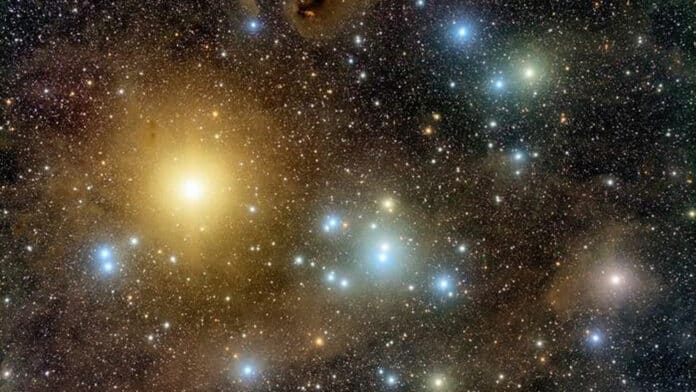Astrophysical models of binary-black hole mergers in the universe require a significant fraction of stellar-mass black holes (BHs) to receive negligible natal kicks to explain the gravitational wave detections. This implies that BHs should be retained even in open clusters with low escape velocities.
In a new study, scientists searched for signatures of BHs in the nearest open cluster to the Sun- the Hyades. The Hyades is located at a distance from the Sun of about 45 parsecs or 150 light-years. Their findings hint at several black holes in the Hyades cluster — the closest open cluster to our solar system — which would make them the closest black holes to Earth ever detected.
The discovery happened while expert Stefano Torniamenti was conducting a study at the ICCUB, one of the research centers that makes up the IEEC.
For this study, the astrophysicists used simulations that track the motion and evolution of all the stars in the Hyades to reproduce their current state.
Stefano Torniamenti, a postdoctoral researcher at the University of Padua and the first author of the paper said, “Our simulations can only simultaneously match the mass and size of the Hyades if some black holes are present at the center of the cluster today (or until recently).”
The observed properties of the Hyades are best replicated by simulations with two to three black holes at this time. However, simulations where all the black holes have been ejected (less than 150 million years ago, roughly the last quarter of the cluster’s age), can still provide a good match because the evolution of the cluster was unable to completely wipe out the traces of its previous black hole population.
The latest findings suggest that the Hyades-born black holes still exist within or near the cluster. They are now significantly closer to the Sun than the last contender (the black hole Gaia BH1, which is 480 parsecs away), making them the nearest black holes to the Sun.
In recent years, the breakthrough of the Gaia space telescope has made it possible for the first time to study the position and velocity of open cluster stars in detail and to identify individual stars with confidence.
Mark Gieles, a member of the UB Department of Quantum Physics and Astrophysics and host of the first author in Barcelona, said, “This observation helps us understand how the presence of black holes affects the evolution of star clusters and how star clusters, in turn, contribute to gravitational wave sources.”
“These results also give us insight into how these mysterious objects are distributed across the galaxy.”
Journal Reference:
- S Torniamenti, M Gieles, Z Penoyre, T Jerabkova, L Wang, F Anders. Stellar-mass black holes in the Hyades star cluster? Monthly Notices of the Royal Astronomical Society. DOI: 10.1093/mnras/stad1925
